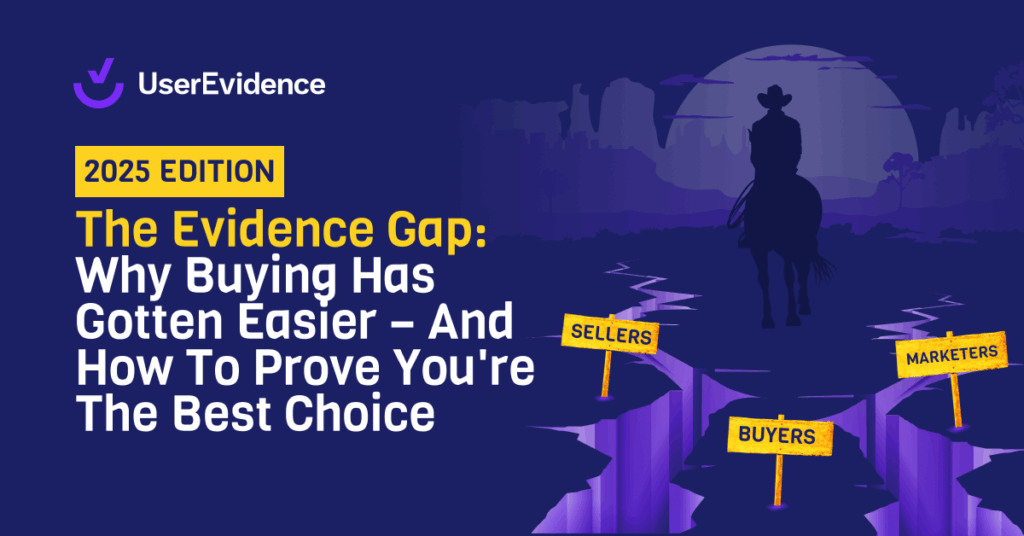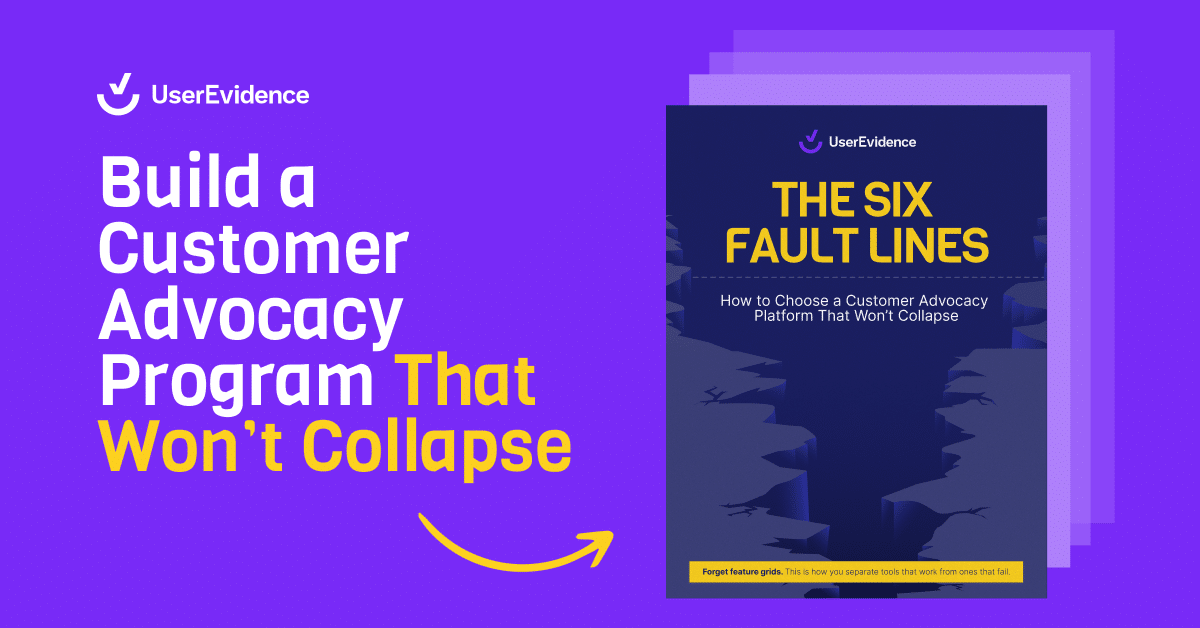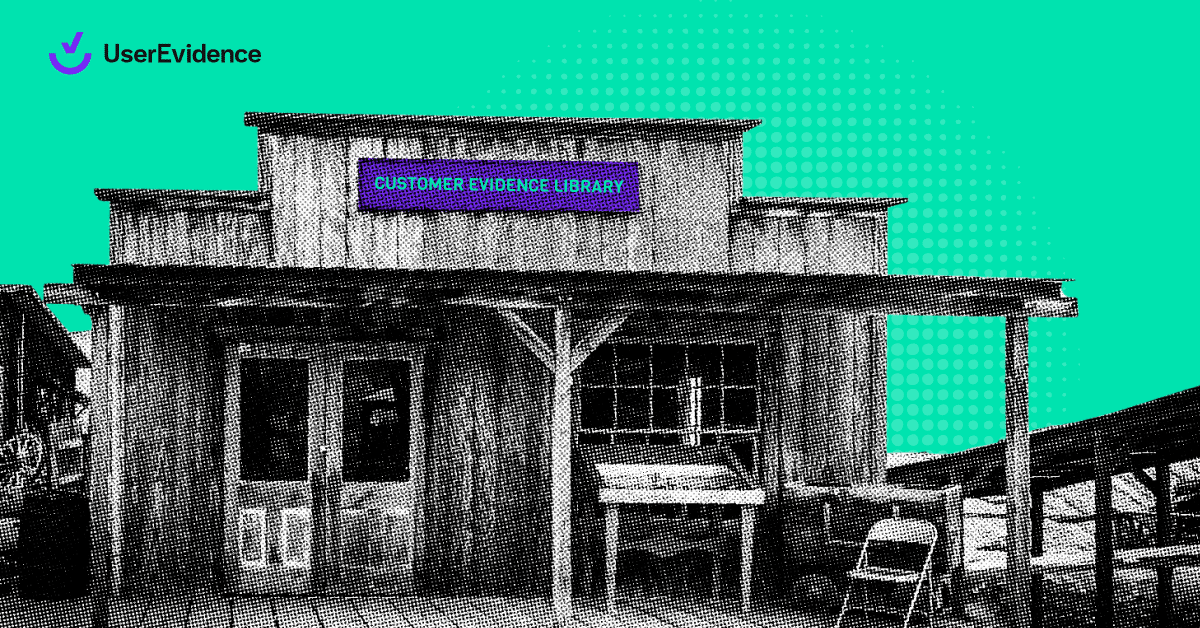“We need a case study” is a phrase every B2B marketer is used to hearing. The weight of that phrase is heavy. It means something big. Beautifully produced. Maybe even a full video production.
But then, you’re snapped back to reality when your sales team asks you one simple, practical question: “Do we have anything that shows how we stack up against competitor X?”
That reality is that traditional case studies are great to have in theory, but in practice are hard to get and not as effective as we’ve all been programmed to believe.
Case studies tend to be polished and broad. But today’s go-to-market questions are specific and situational. In 2025, sellers care less about “who” and more about “how”:
- how you can solve problems for them
- how you can make their lives easier
- how you helped X company achieve Y goal
Our recently launched original research report, The Evidence Gap, revealed that nearly all buyers are evaluating multiple products, with almost half (48%) considering 4 or more.
Vendors today face two major problems: stiff competition and stale case studies.
So how do you break through the noise today? By rethinking what customer evidence looks like.
Here’s a breakdown of everything you need to know to shift your thinking (and strategy) to building a powerful customer evidence platform that helps you close deals.
Sellers want answers, not artifacts
The reality is, buyers are looking for answers to understand your value proposition as it relates to them. Sure, they might be impressed you work with notable brands, but it’s not enough to convince them to close.
What sellers want are legitimate answers to the questions they’re using to vet you:
- “Who else in my industry uses you?”
- “What business outcome did teams like mine see?”
- “How is your support actually different?
- “Why did [Competitor 1] choose you over [Competitor 2]?”
The good news? You don’t need a 2,000-word narrative to answer those. You need a legit stat, a relevant quote, or a short, contextual clip that sales can access in the exact moment of need.
The Evidence Gap shows that having this type of customer evidence is critical:
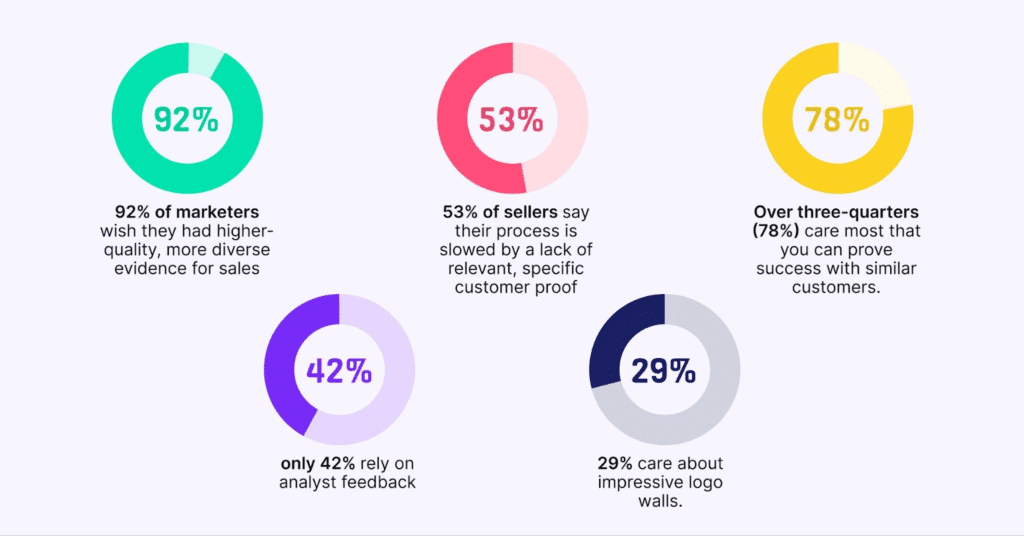
“Blind but verified”: trust without the red tape
You’ll hear us use the phrase blind but verified a lot. Here’s what it means:
- Blind: The customer is anonymous.
- Verified: A trusted third party (hint, hint: UserEvidence) confirms the source and authenticity.
Blind but verified customer evidence removes all the hurdles that come with traditional case studies. Instead of waiting months for case study creation and approval, “blind but verified” expands your customer evidence options.
Maybe it’s a simple quote from a customer, an onboarding story, or how you helped a customer in a niche industry achieve 10x results.
All of these are perfect examples of the tactical customer evidence buyers are looking for, and by using the blind-but-verified route, you’re able to deliver.
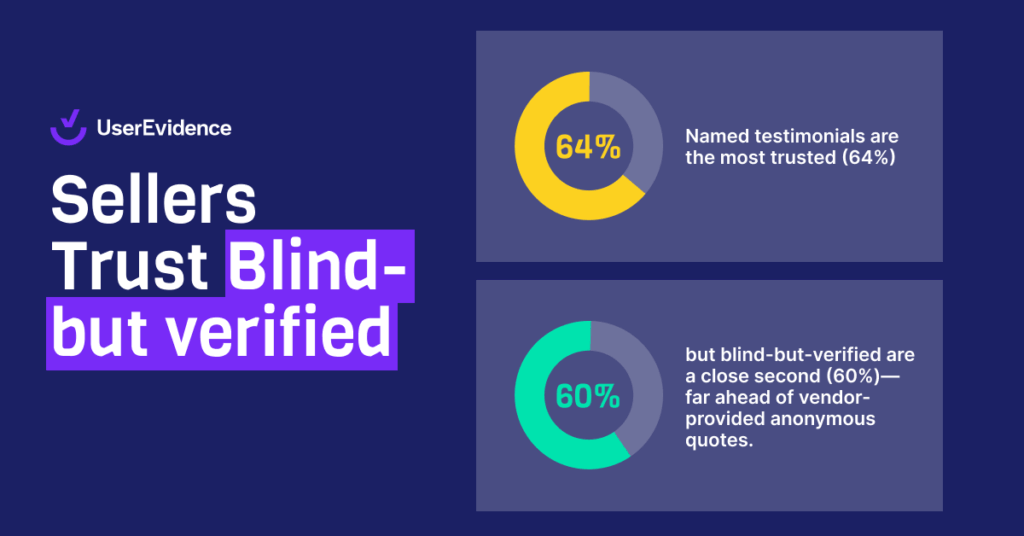
Blind-but-verified also opens doors in industries where named proof is hard to publish (security, finance, healthcare) and helps you scale coverage across segments fast.
Creating a customer evidence flywheel: from one-offs to always-on
The next step is making collecting customer evidence an integral part of your go-to-market strategy.
The good news? You don’t need a new budget cycle to start. You just need buy-in and a shared standard that “every claim deserves a receipt.” And it’ll actually take less time than it does to spin up a case study. yHere are some tactics you can implement:
1) Install micro-survey moments
Surveys are not dead, and can be incredibly effective customer evidence tool. The key is to keep them short. Trigger 1–2 question survey email to customers at natural points in your lifecycle and funnel:
- Post-renewal (fresh success)
- Post-win (competitive reasons and outcomes)
- Post-onboarding (time-to-value, support)
- Post-loss (why you lost; competitive intel)
Keep each survey laser-focused on one answer you’ll reuse in sales and marketing.
2) Make evidence collecting easy
Put processes in place to make it insanely easy for customer-facing teams (CS, sales, etc.) to capture “proof moments.” Don’t just ask them to collect stories — tell them exactly who and what to look for.
Start with clear signals of good evidence:
- Ask customers who:
- Just achieved a milestone (e.g., go-live, ROI win, feature adoption)
- Are big advocates (give referrals, repeat purchases, high NPS)
- Overcame an objection or challenge with your help
- What to capture:
- Quantifiable results: “We cut onboarding time by 40%”
- Emotional validation: “This saved our team from burnout”
- Behavioral proof: “We’ve now rolled this out across all departments”
Make it insanely simple to collect:
- A short library of templated micro-surveys for different use cases
- Examples of “good proof” (specifics > superlatives)
- A simple nomination flow in Slack or your CRM (e.g., “Tag #proof-moment when you spot one”)
3) Make the evidence part of your marketing strategy
Don’t just tuck these little pieces of gold away until someone asks, use them. Put them on your website. Turn them into blog content. Email nurture streams. Sales collateral. Here are a few ideas to get you started:
- Sales receipts: one-liners, proof points, and customer snippets mapped to your top buyer questions. Customer evidence should be how sales answers buyer questions.
- Content series: Create a “Quarterly Customer wins” series with a round-up of the best customer wins each quarter. It can be short and sweet with quote callouts or bigger stories your sales team may have to share.
- Email nurture/newsletter: Create a nurture stream specific to customer examples, or have a section of your newsletter with “customer wins” that features short stories or compelling quotes.
4) Wire it into the sales process
Your sales team needs to rethink their discovery narrative, and work in customer evidence so that every claim is answered via customer proof.
Think: outcomes, competitive wins, and support experience.
The Evidence Gap Report uncovered that 26% of deals die for evidence-related reasons (ROI not proven, lack of live references, no clear differentiation).
By infusing customer evidence throughout your sales pitches, you’ll make sure not to fall victim to this statistic.
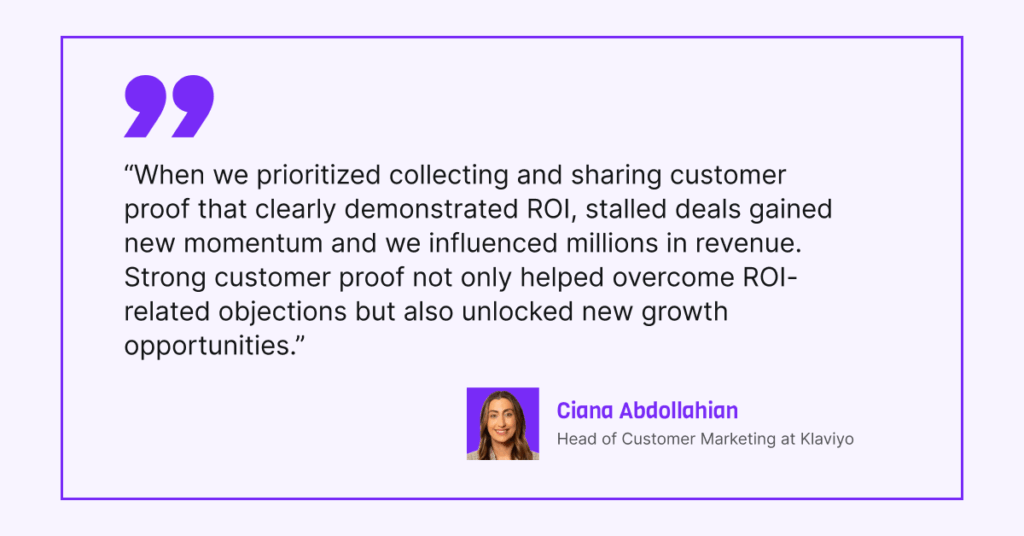
“But my execs want videos from big customers…”
Same. Especially in enterprise, you’ll hear “Give me six beautifully produced customer stories.” Here’s how to reconcile it:
- Use an always-on evidence engine to clear the sales queue of tactical asks (industry peers, competitive specifics, support, outcomes).
- Invest the time you free up into the 2–3 high-production stories leadership wants.
This gives you the best of both worlds: the practical receipts that move deals and the flagship moments that build your brand.
Your 30-day sprint to rethink customer evidence
Steal this plan and run it:
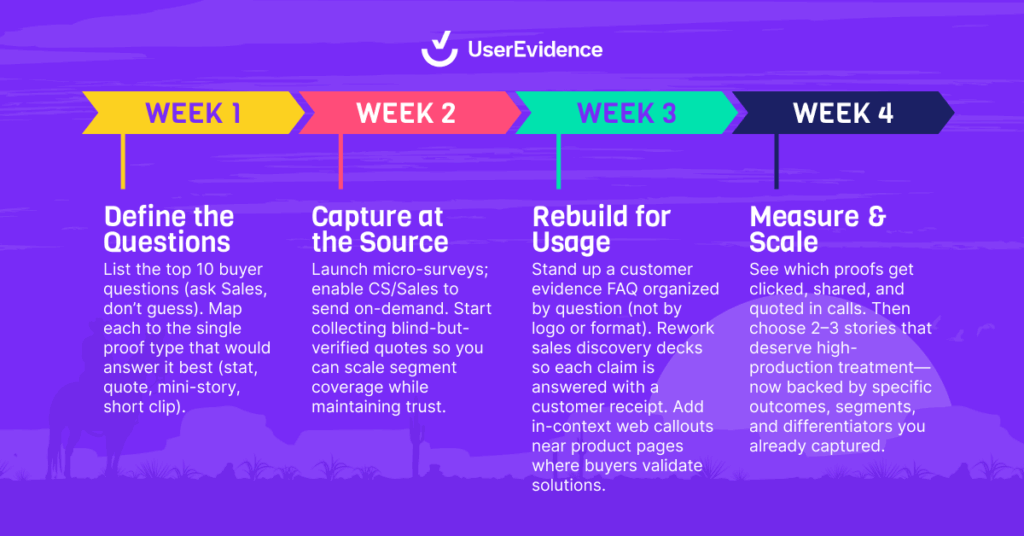
Final thoughts: AI is changing discovery. Your evidence has to keep up
58% of buyers now start their software research using AI tools . That means the question buyers ask has changed from “What’s the best tool?” to “What’s the best tool for me (my industry, size, use case)?”
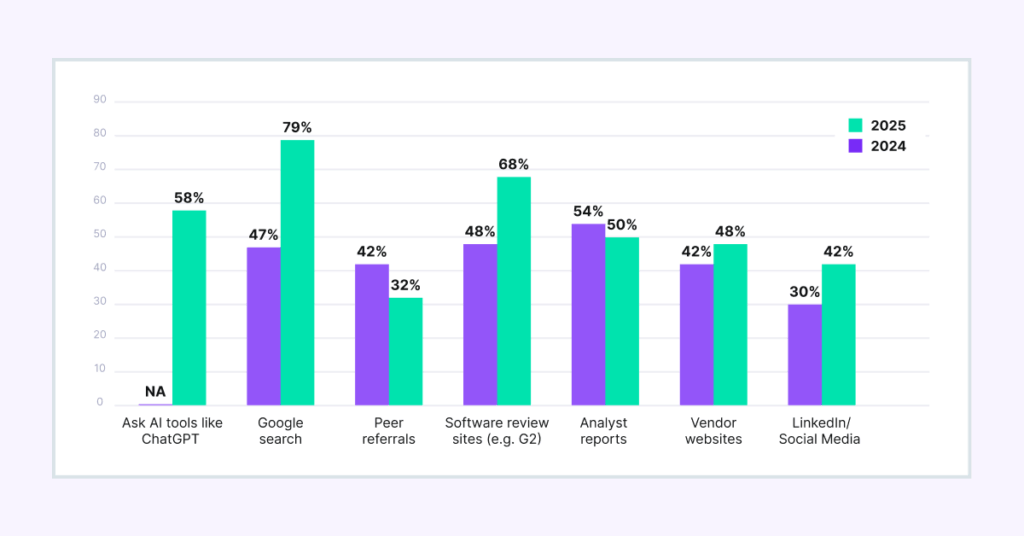
Here’s the problem: most vendors aren’t ready. They don’t have specific, indexable customer proof that AI will surface first. So they risk losing, before they even get a chance to win.
Rethinking your customer evidence is the fix to this. The fancy case study is great, but it doesn’t have legs. If you want to surface in AI results, you need an “always-on” approach. Collect customer evidence in different formats, for different industries, and make sure it’s visible—not buried in PDFs.
_________________________________________________________________________________________
In 2026, the most effective PMM teams won’t be the ones with the prettiest PDFs. They’ll be the ones who can answer any real buyer question, on demand, with customer-verified proof.Stop chasing formats. Start shipping answers. Check out The 2025 Evidence Gap Report to understand how you can rethink customer evidence to win more deals in 2026.
